How to Act When Encountering Reindeer? Read This Checklist to Know
Few travelers in Northern Finland return from their journey without pictures of reindeer – for many, the first encounter with a reindeer is a memorable milestone. Reindeer are a common sight in the reindeer herding area of Northern Finland, and they bring joy to many travelers. Iida Melamies is a reindeer herder in Sattasniemi reindeer herding cooperative in Sodankylä, Lapland. I asked Iida to tell us what everyone traveling in reindeer herding area should know about reindeer.
Iida Melamies is delighted that so many travelers are enthusiastic about reindeer and want to see and photograph them during their trips to Lapland.
– Travelers are really important to us, and it’s also true that the reindeer industry and tourists often share the same interests – reindeer don’t enjoy clear-cutting any more than hikers, for example.
To ensure that encounters with reindeer are successful and enjoyable for all parties involved, there are a few things to know. Here’s a checklist that’s worth keeping in mind!
Where can you see reindeer?
The reindeer herding area covers the three northernmost provinces of Finland: Lapland, Kainuu, and Northern Ostrobothnia. In these areas, you can see reindeer almost anywhere, sometimes even in the centers of villages or towns. If you’re traveling to Lapland in your own car or renting one, you’ll likely see reindeer from your car window and, of course, during hikes in the wilderness.
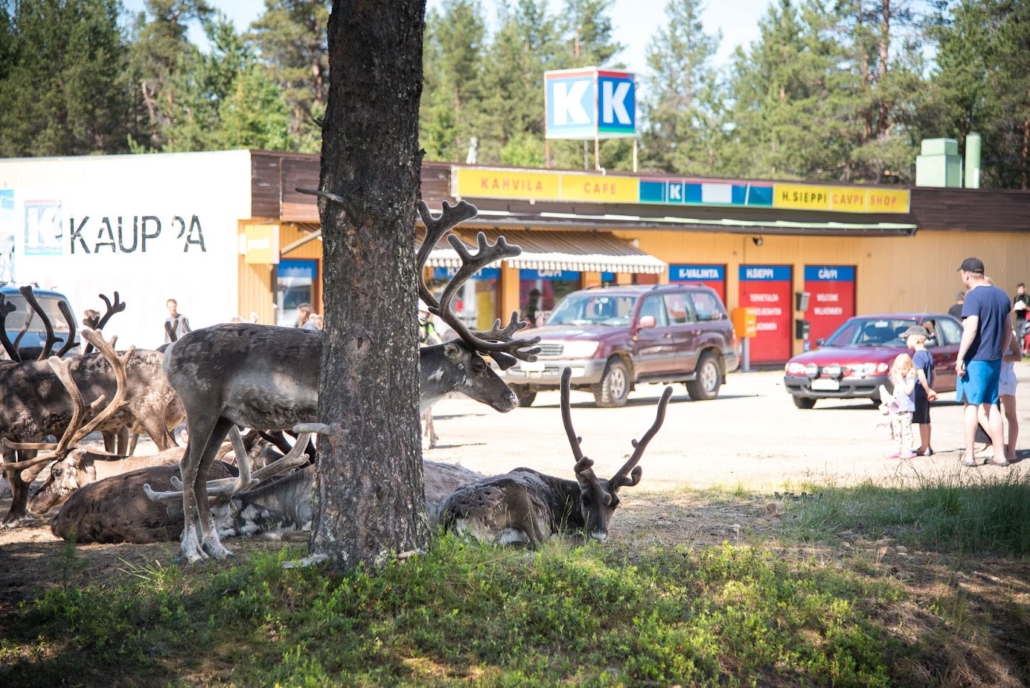
Can reindeer be dangerous?
Reindeer rutting season occurs in the autumn, often coinciding with the beautiful and colorful autumn foliage, which also brings many tourists to Lapland. During this time, reindeer bulls can be jealous of females and might be aggressive not only towards other reindeer but also towards humans. It is possible, although rare according to Melamies’ experience, that a bull in rutting season might direct its aggression towards a human.
– I’ve never been in threatening situations myself, but I know it’s possible, and sometimes someone has even ended up in the hospital as a result of an attack. Usually, it involves a tamer reindeer, or someone has simply been in the wrong place between a bull and females, based on bad luck, Melamies speculates.
– If a reindeer charges, it’s advisable to seek cover behind a tree.
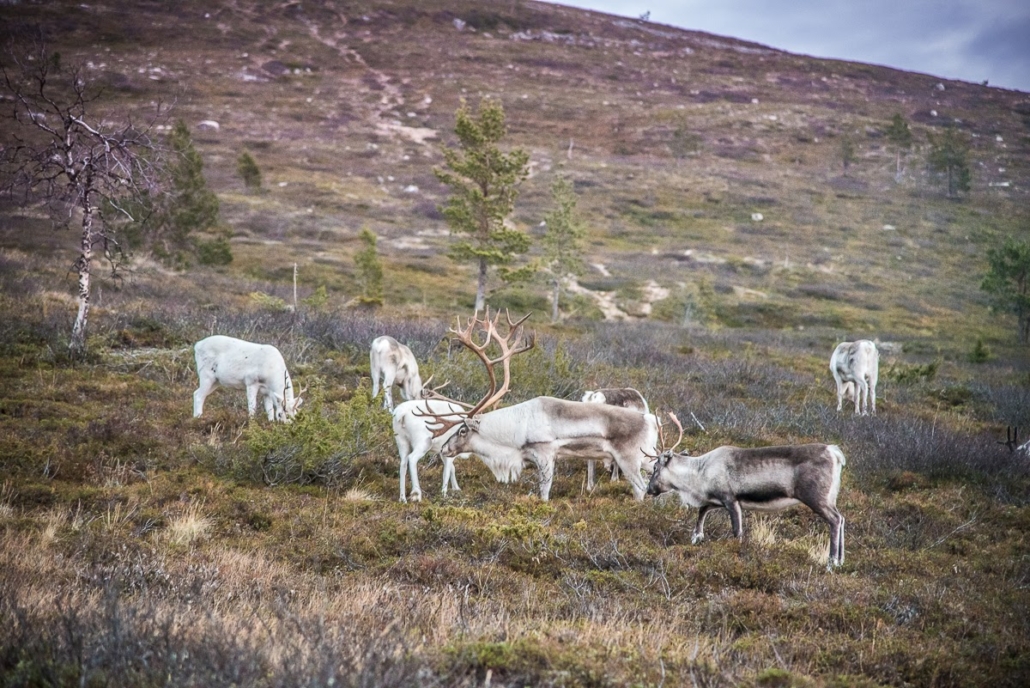
However, not all reindeer are dangerous during mating season.
Antlers can help you identify who to avoid in the autumn:
- If an animal has an impressive antler crown and the antlers no longer have a velvet-like skin, it’s a bull, and the antlers have shed their skin to be ready for rutting season fights. For this same purpose the bull also develops a thick, strong neck. It’s good to keep a respectful distance from such an animal!
- Noticeably smaller antlers and a generally smaller size indicate that it’s a female reindeer, and there’s no need to fear even if the antlers are already bare.
- Castrated male reindeer (geldings) don’t shed their antler skin and are generally not interested in fighting even during rutting season.
- Male reindeer usually aren’t dangerous as long as their antlers still have a skin. After the rutting season, they shed their antlers and are tired from the stresses of the season, so they’re not a threat.
Rutting season lasts from the latter half of September to October-November. Outside this time, even male reindeer are calm.
However, always remember to respect reindeer and not disturb them. In the wild, reindeer are not tame, and even though they might let you approach, you should never chase or harass them in any way. If you want to feed and touch reindeer, visit one of Lapland’s many reindeer farms where this is possible.
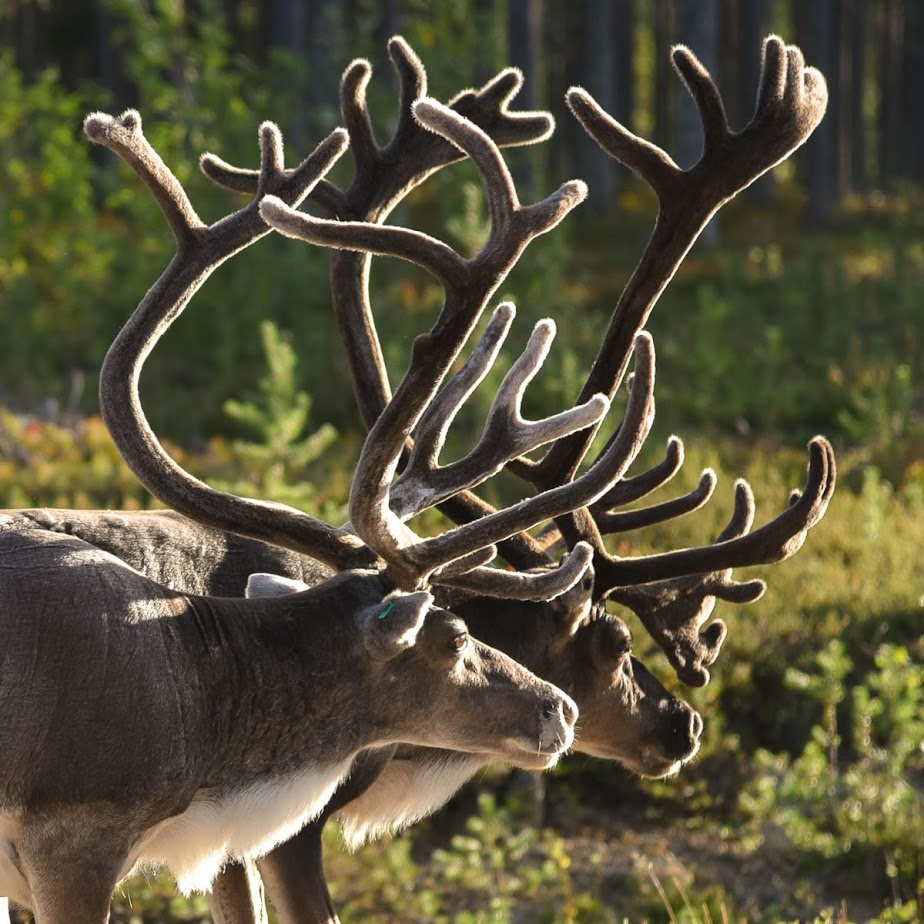
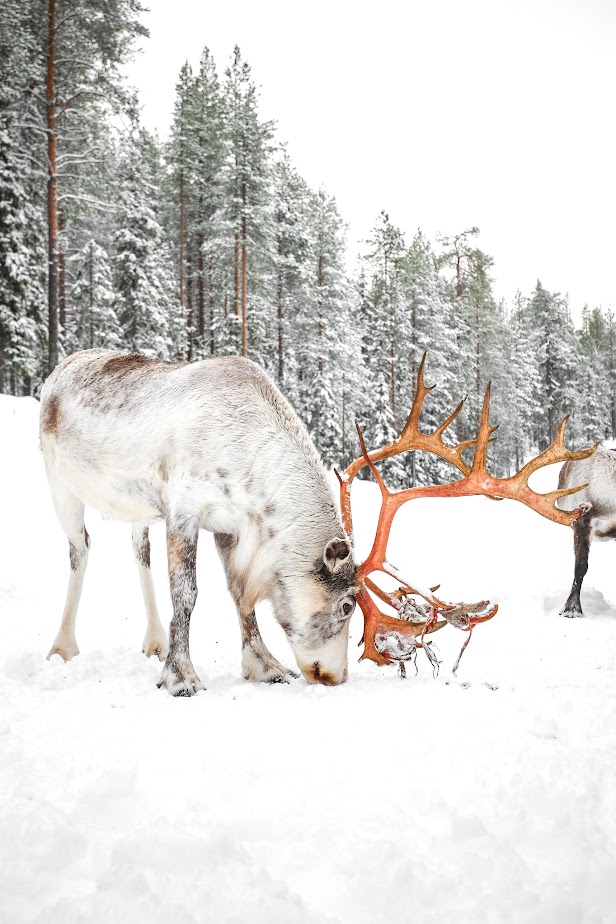
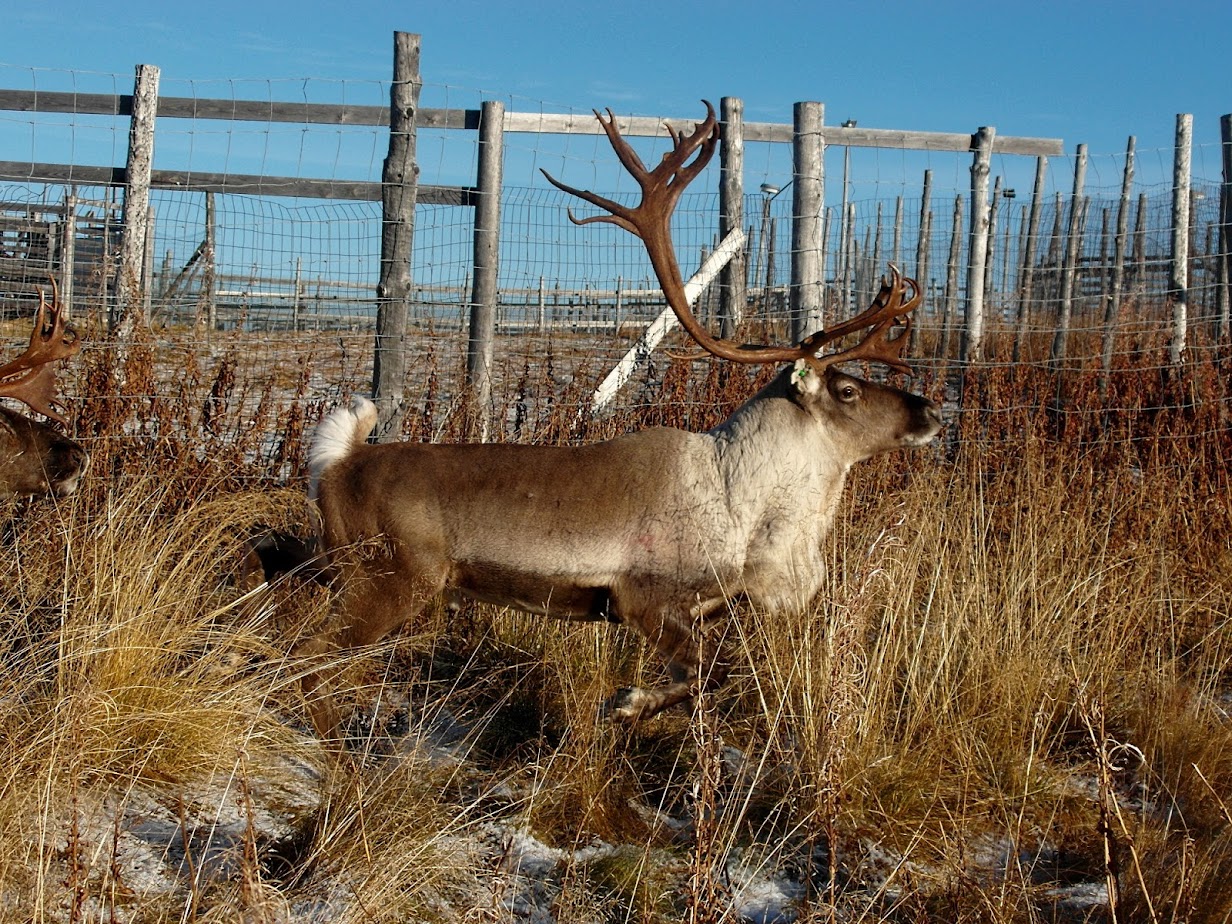
If you have a reindeer collision, call emergency services
If you notice a dead or injured reindeer on the side of the road, or if you collide with a reindeer while driving in Finland, always call 112.
– The emergency number will notify the local reindeer assessor, who is a person trained by the reindeer herding cooperative. If the reindeer survives the collision, the assessor will track it if necessary and put it down. They will also provide the necessary information to the insurance company, Melamies explains.
Young calves rely on their mother’s protection
Spring is a sensitive time for reindeer, as that’s when calves are born and become attached to their mothers. Calves are born in May to June, even on the remaining snow. The calves are incredibly cute, but like all young animals, they need their space and should be kept at a distance.
– The time is sensitive for them, and they can easily get scared, causing them to distance themselves from their mothers. A calf separated from its mother might become a target for eagles, for example, and it’s generally at risk if the mother doesn’t return promptly. Therefore, it’s very important to give the young calves space and not approach them, warns Melamies.
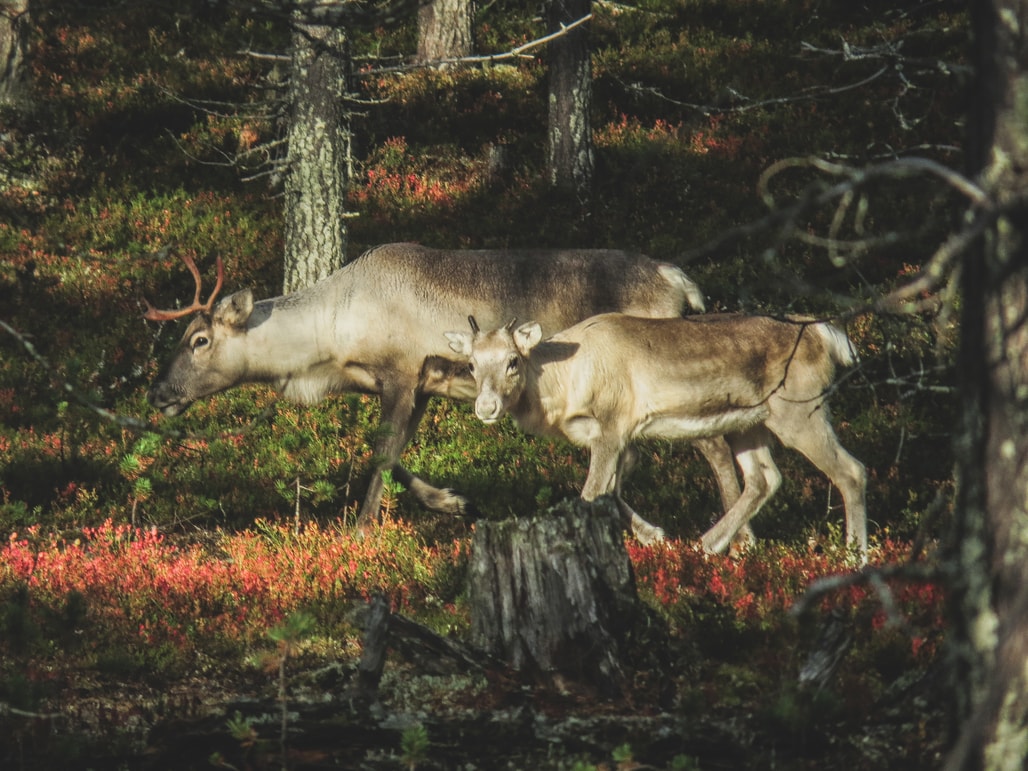
Even a small dog can distress a reindeer – always keep your dog on leash!
Reindeer are sensitive animals and can be distressed even by the attention of a small dog. Furthermore, a dog that doesn’t typically have a hunting instinct might start chasing if it sees a reindeer fleeing, or it might follow reindeer out of curiosity, even leaving a cottage yard to watch them. For example, a dog that chases pregnant female reindeer could cause severe harm very quickly. The owner of the dog is liable for any damages caused.
– A reindeer can experience a miscarriage due to stress alone, even if the chasing dog doesn’t actually touch it. And during the spring, all animals are reproducing, planning nesting, and caring for their young, not just reindeer. A wild animal can’t distinguish a friendly dog from a threat; it always assumes the worst and flees. That’s why keeping dogs on a leash is so important, regardless of their size, says Melamies.
The stakes are high because a look at Finnish reindeer husbandry law reveals that a reindeer owner even has the right to kill a dog that is chasing reindeer, unless the dog can be caught or the situation can be resolved quickly in another way. According to Melamies, this solution is very rarely used.
Mosquito season leads reindeer onto roads – patience is key
In the north, people generally don’t rush, which is occasionally helpful when dealing with reindeer as well. Many who have driven in reindeer herding area know the situation when a reindeer on the road starts to escape – or sometimes just slowly moves – along the road, staying in front of the car instead of moving aside.
– It’s best to proceed calmly; the reindeer is more likely to move aside if you give it space. And usually, it will eventually move away from the road when it encounters a fork in the road where it can turn off, says Melamies.
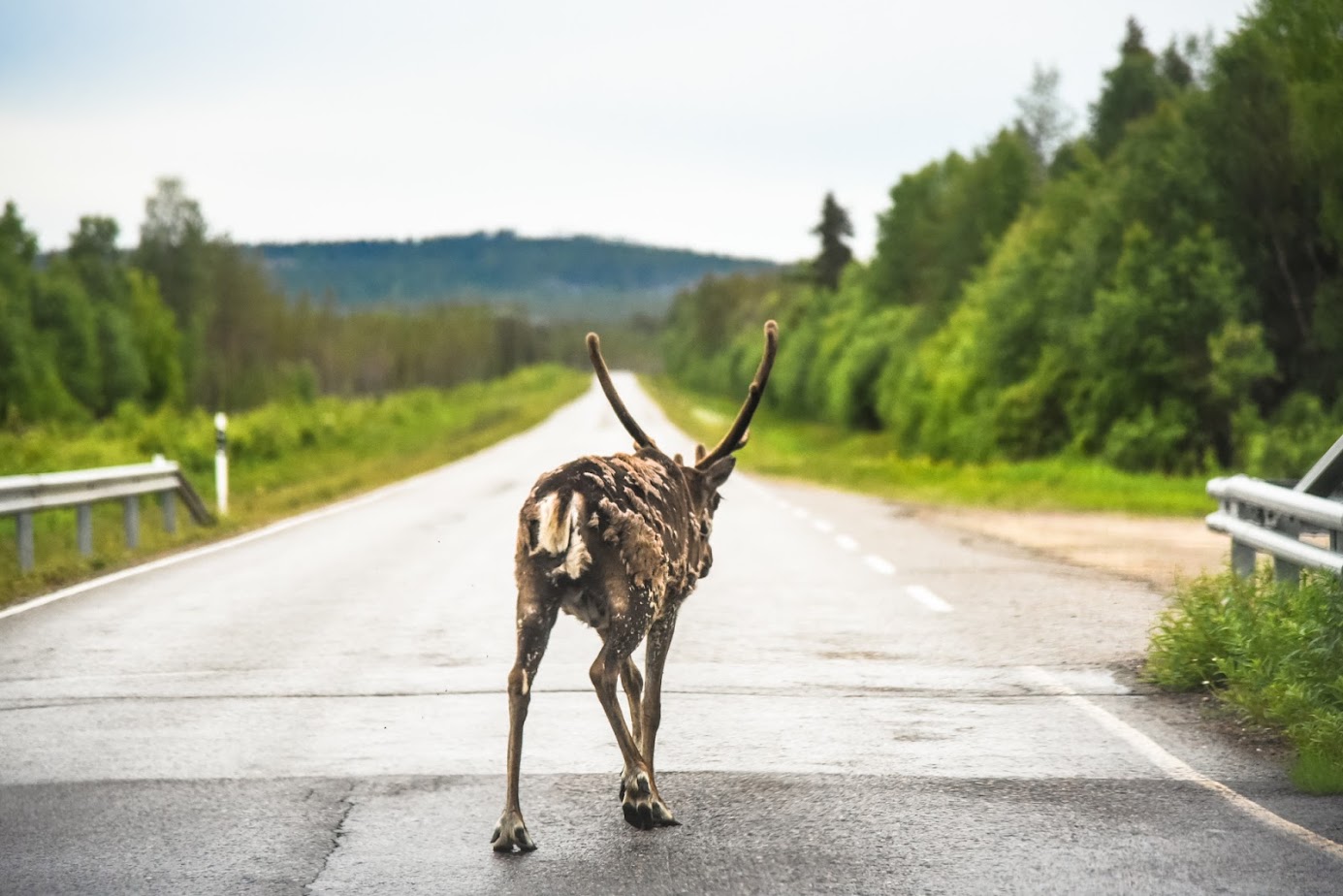
During the summer, reindeer are on the road to escape the multitude of mosquitoes and other insects, and they aren’t very willing to leave the road. An open road with a breeze can provide a bit of relief from the mosquito problem. It may take a while to follow a slow-moving reindeer, and the co-pilot can use the time for photography, for instance.
When you encounter a reindeer on the road, it’s a good idea to inform oncoming vehicles by flashing your high beams – or if an oncoming driver flashes their high beams at you, you’ll know that there are likely reindeer or possibly elk ahead, so it’s wise to slow down.
– A reindeer can blend in with the color of the road, and it can be hard to notice. Flashing your lights is a good way to help prevent sudden braking.

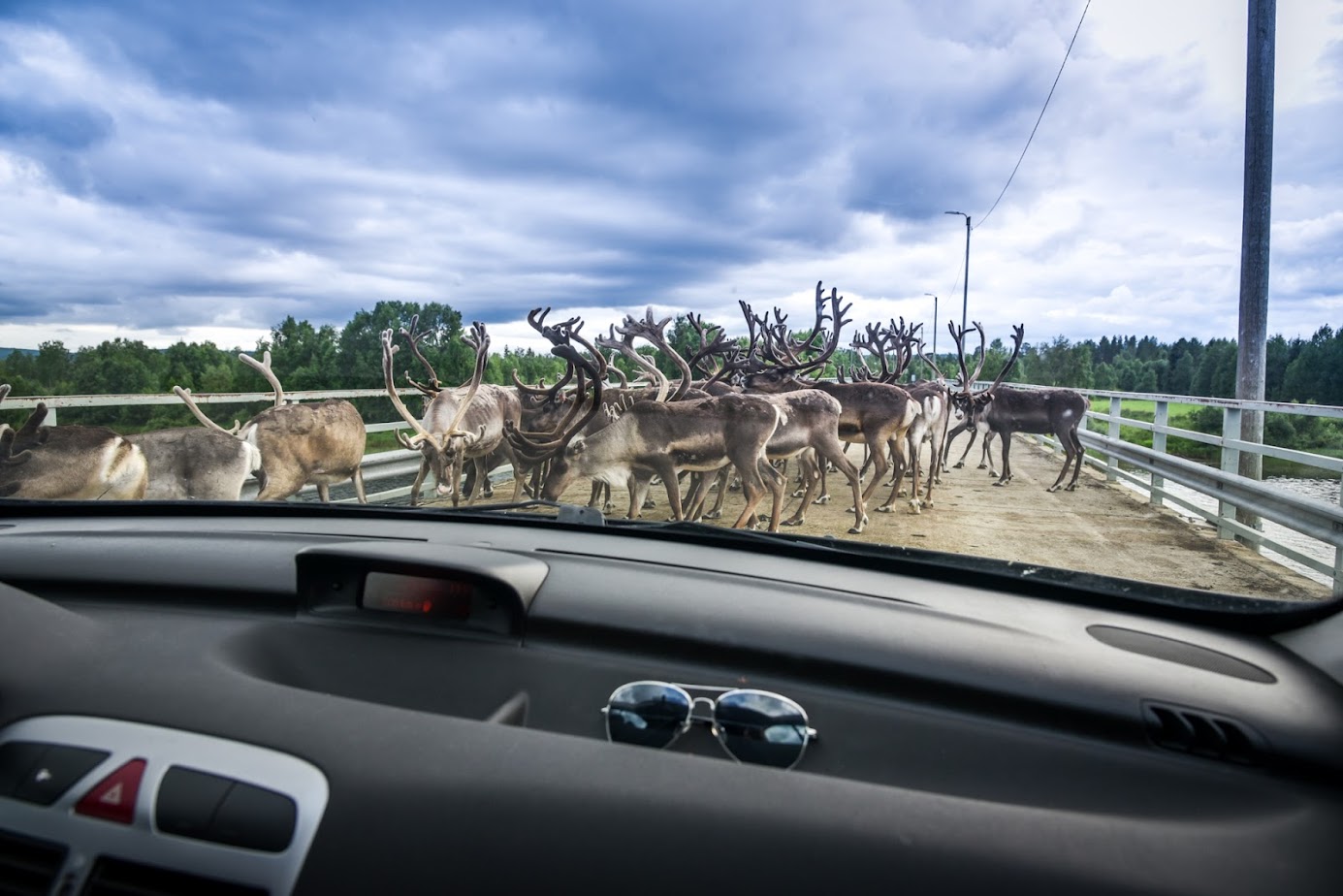
Remember traffic safety while taking photos
When arriving in the north, many people are eager to take a photo of the first reindeer they see. Even an enthusiastic reindeer photographer should pull over in a way that doesn’t block the road. Even on seemingly quiet roads, heavy traffic could come up behind you at a speed of 80 kilometers per hour, and the driver might not notice a vehicle stopped on the road ahead soon enough.
While this might seem obvious in advance, unfortunately, it isn’t always.
– I recall a case where a tourist was photographing the midnight sun in the middle of the road and got hit by a car because the driver couldn’t see properly due to the bright backlight, Melamies recalls.

Once you reach your destination, it’s easier to take photos of reindeer in a calm environment rather than in traffic.
– I’d encourage trusting that it’s not usually necessary to take a photo of the very first reindeer you see. You’ll definitely have more opportunities to see and photograph reindeer during your trip, and likely in much more picturesque settings, making your photos even better, adds Melamies.
– You can ask tourist and nature centers for tips on good reindeer spotting locations nearby. They can surely advise you on where you’re likely to see and photograph reindeer.
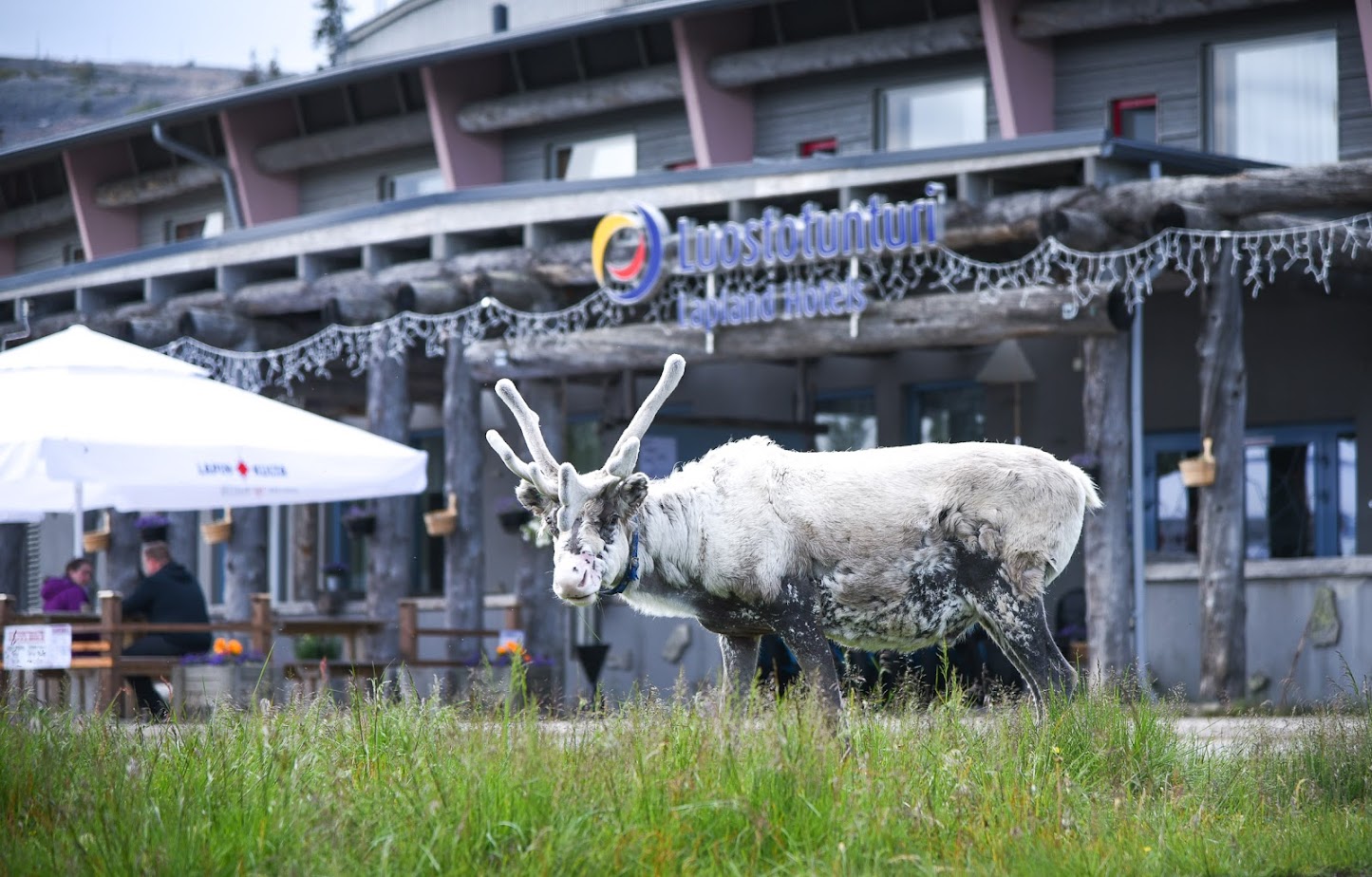
Reindeer gates guide the movement of reindeer – not tourists
In the reindeer herding area, you might often come across reindeer gates. These can be gates made of wood or plastic mesh on roads or paths. The purpose of these gates is to guide or restrict the movement of reindeer as needed. The gates are not locked, and you can open them when necessary. If you come across a closed gate, you can open it to pass, whether it’s on foot or by car. The key thing is to leave the gate as you found it – if it was closed when you arrived, close it behind you.
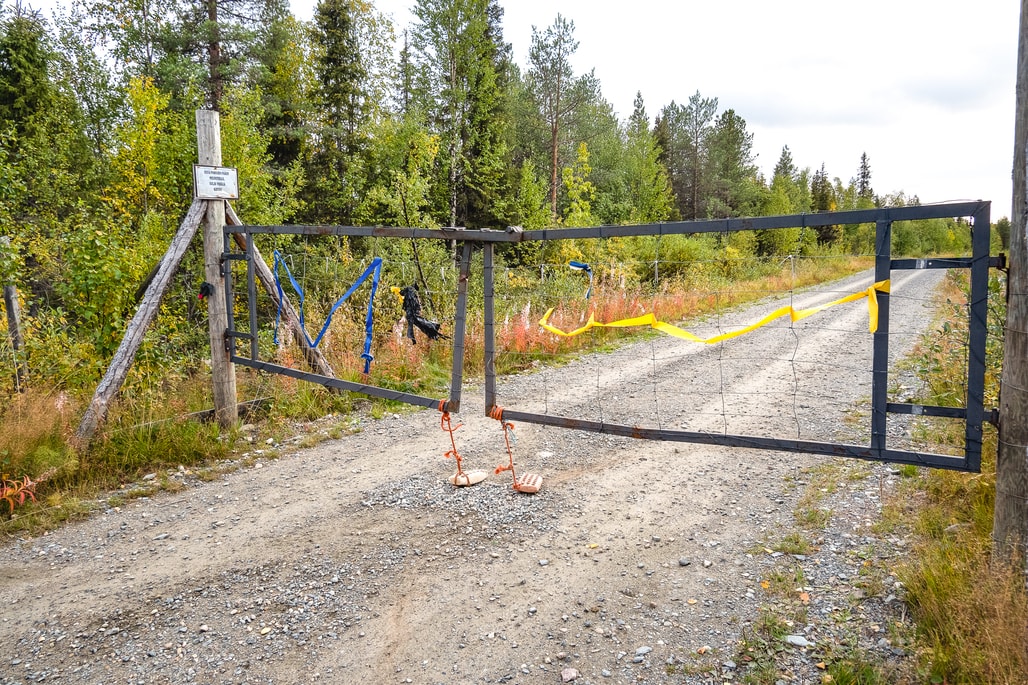
On the other hand, reindeer enclosures are places you shouldn’t enter on your own. You can think of reindeer enclosures as similar to barns; they’re private areas. These enclosures are not extensive enough to include anything particularly interesting for hikers anyway. Sometimes, an enclosure might have calves or small reindeer with their mothers, and these animals need their space and peace.
– If you notice a reindeer worker near an enclosure, you can certainly ask them about the place and its operations to get more information and maybe even get guided to the enclosure, encourages Melamies.
Reindeer owners gather at reindeer round-ups at these enclosures throughout autumn and winter. During these events, a large number of reindeer are gathered from the wild into the enclosure, where they are separated according to their owners, and the new calves are identified. If a hiker happens to have the magical luck to be in the right place at the right time to witness these round-ups, it’s worth observing the activity from outside the fence. It’s interesting and safe to watch how the separation process unfolds through the gaps in the fence, and even children can enjoy it.
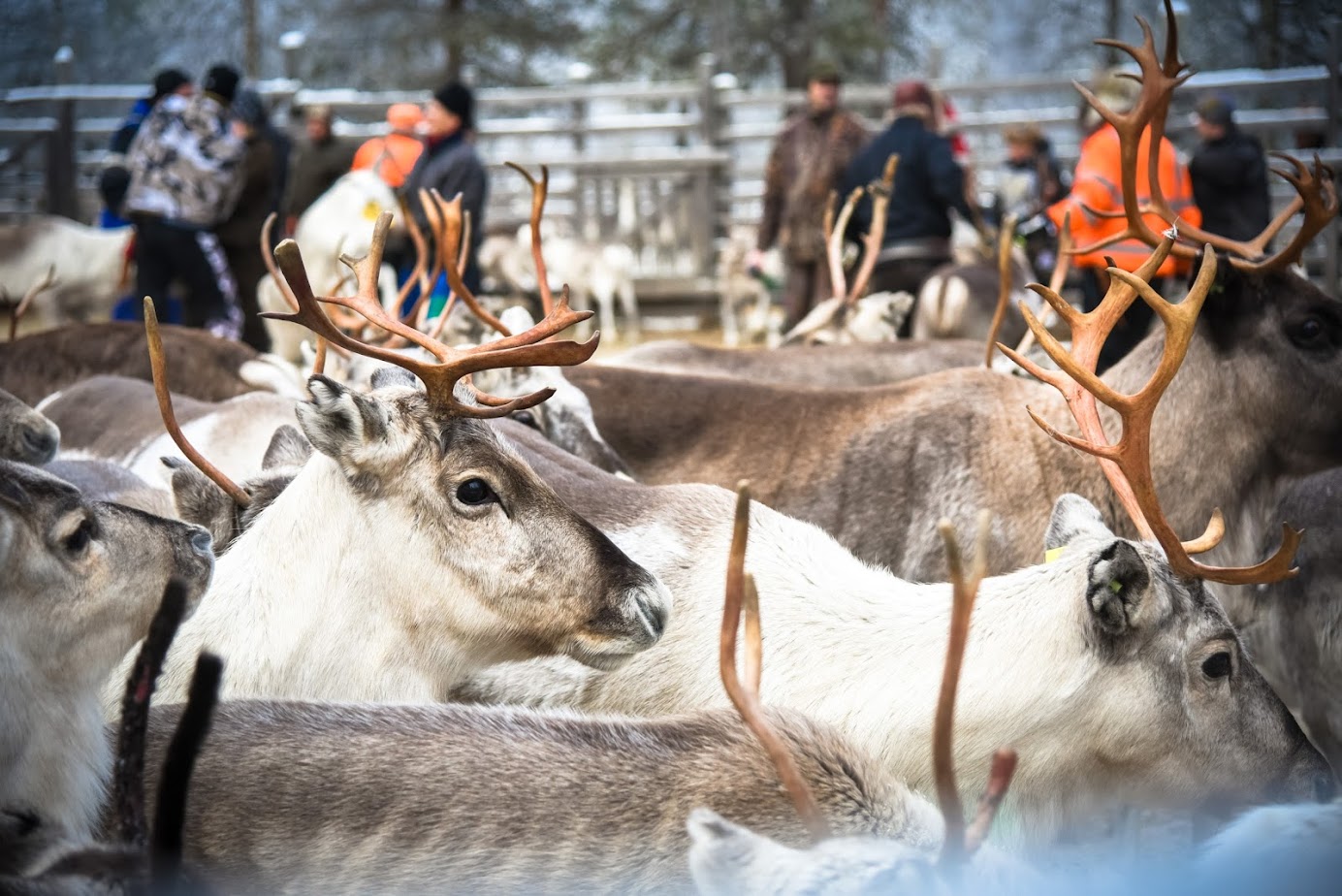
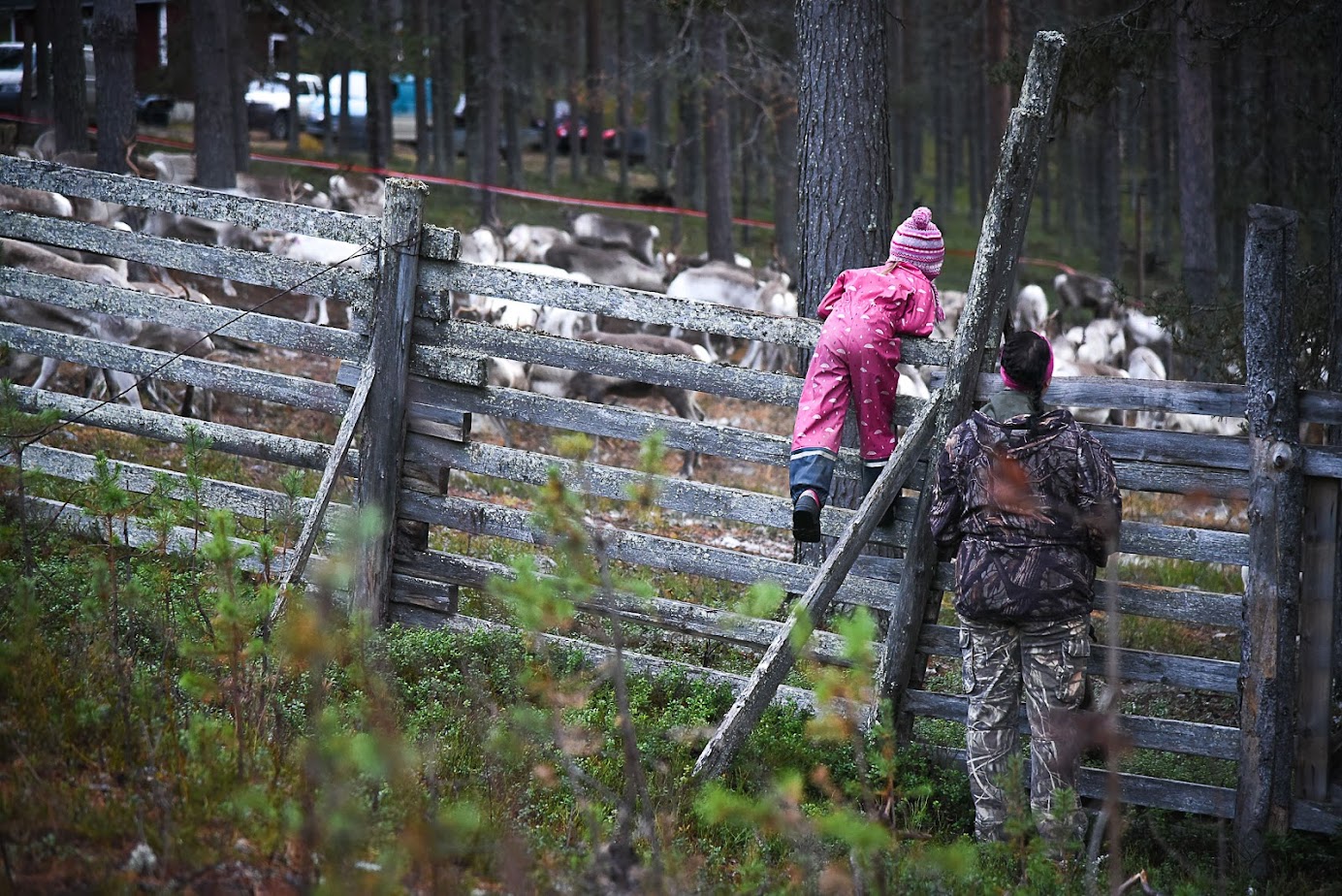
Reindeer work is also conducted in national parks
Most hikers know that Finnish national parks have their own rules that can regulate or limit things like hiking and cycling within the park. However, reindeer work is conducted throughout the reindeer herding area, including national parks. This means that a hiker might spot an ATV or a snowmobile operator doing work in the park’s natural setting.


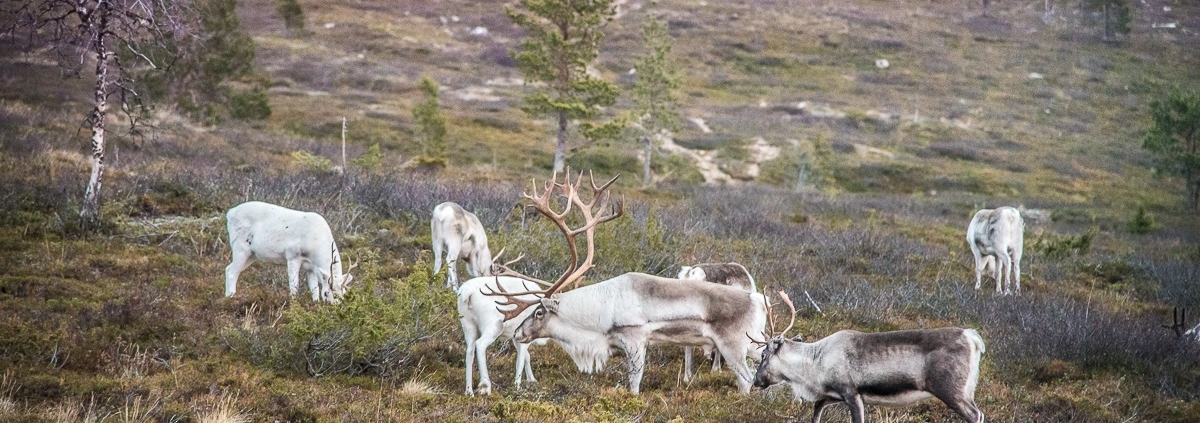



Leave a Reply
Want to join the discussion?Feel free to contribute!